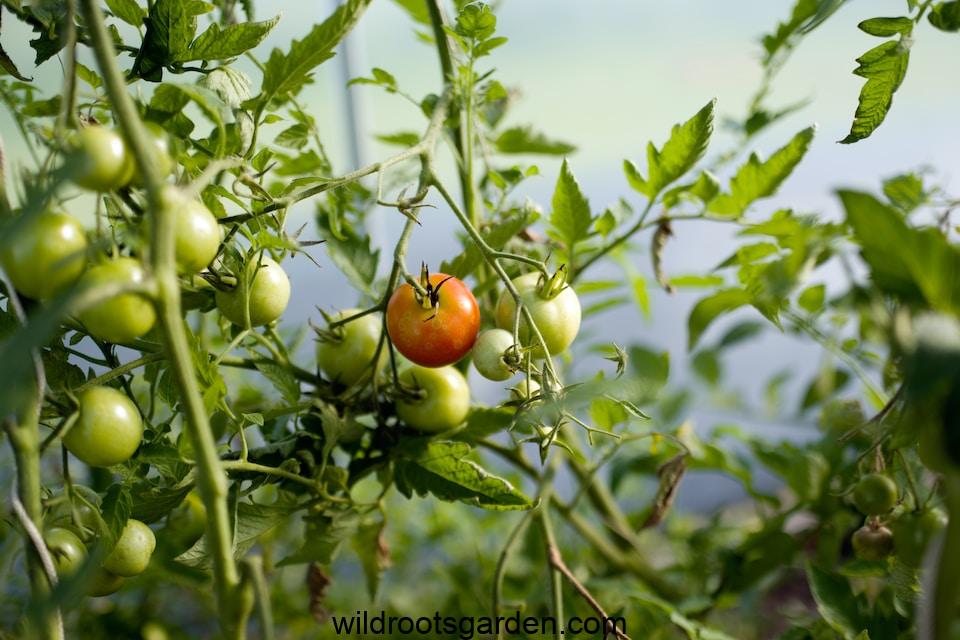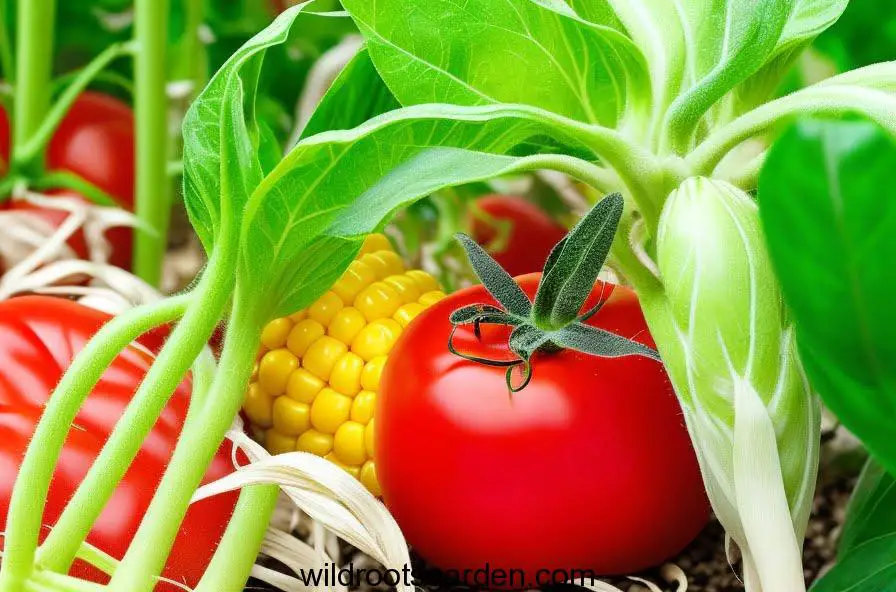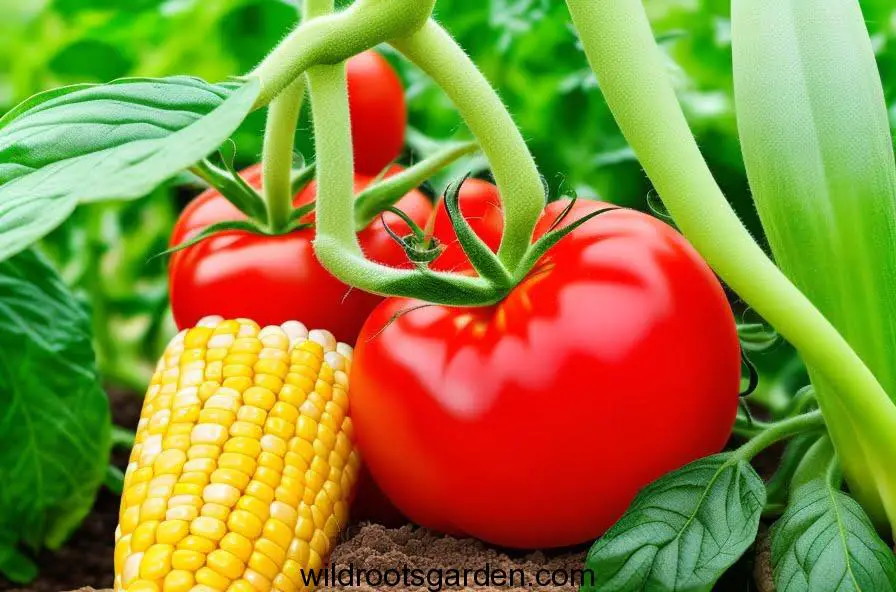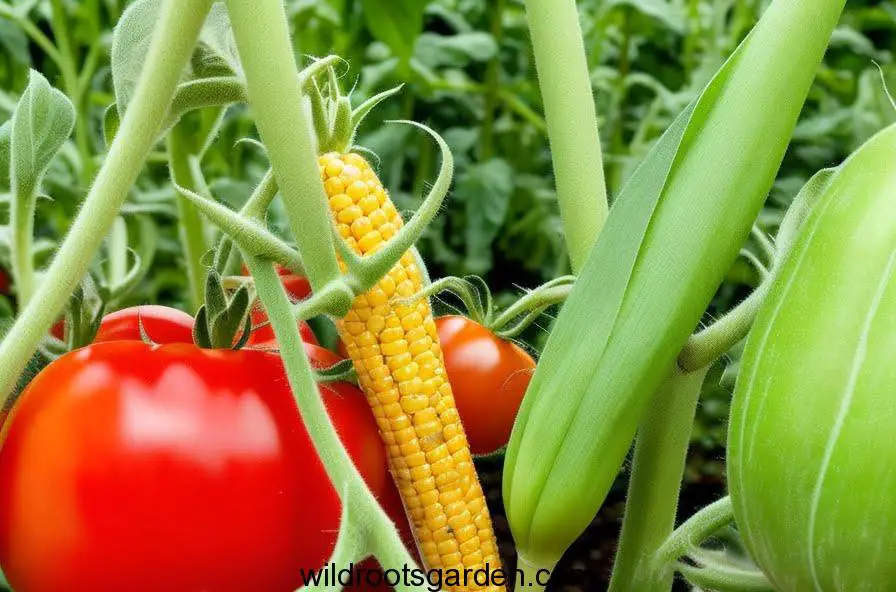Can Corn and Tomatoes Be Planted Together: Many gardeners are interested in companion planting, which is the practice of pairing up different plants to promote their growth and mutual benefits. One common question is whether corn and tomatoes can be planted together. In this text, we’ll explore this topic in detail and examine whether maize and tomatoes are compatible as companion plants.

Understanding Companion Planting
A gardening practice known as companion planting includes growing various crops adjacent to one another to promote plant health, and development, and fend off pests. This approach is predicated on the idea that some plants interact well when cultivated together, while others can have adverse effects. Gardeners can establish a sustainable ecosystem in their gardens by choosing plants that are compatible with one another.
Benefits of Companion Planting
Companion planting offers various advantages for gardeners. Some key benefits include:
- Pest control: Certain plant combinations repel pests or attract beneficial insects, reducing the need for chemical pesticides.
- Increased yield: Some companion plants enhance pollination and nutrient uptake, leading to higher crop yields.
- Weed suppression: Intercropping with certain plants can help suppress weeds, reducing competition for resources.
- Soil improvement: Different plants have different nutrient requirements, and companion planting can help optimize soil health by diversifying nutrient uptake.

Corn and Tomatoes: Compatibility Factors
Can Corn and Tomatoes Be Planted Together? To determine whether corn and tomatoes can be planted together, several compatibility factors need to be considered:
- Nutrient requirements: Corn is a heavy feeder that requires high levels of nitrogen, while tomatoes are moderate feeders that benefit from additional phosphorus and potassium.
- Height and shade: Corn plants can grow tall and cast shade on shorter plants like tomatoes, potentially affecting their growth and yield.
- Root systems: Corn has an extensive root system, while tomatoes have a shallower root system. This difference may lead to root competition for water and nutrients.
- Disease susceptibility: Corn and tomatoes are susceptible to some similar diseases, such as certain fungal infections, which can increase the risk of disease spread.
The Advantages of Planting Corn and Tomatoes Together
While corn and tomatoes have some compatibility factors to consider, they can still be successfully planted together, and their combination offers several advantages:
- Vertical space utilization: By planting tomatoes alongside corn, you can utilize vertical space more efficiently. Tomatoes can grow upward on trellises or cages while corn stalks provide support.
- Shade tolerance: Tomatoes can tolerate some shade, and the presence of corn can provide partial shade during the hottest parts of the day.
- Pest control: Tomatoes and corn have different pests, and planting them together can help deter pests that specifically target one crop. For example, corn earworms are less likely to infest tomatoes when they are grown alongside corn.
- Improved pollination: Corn produces large amounts of pollen, which can benefit the pollination of nearby tomatoes, resulting in better fruit set and yield.

Companion Planting Tips for Corn and Tomatoes
To ensure successful companion planting of corn and tomatoes, consider the following tips:
- Plant spacing: Provide adequate space between corn and tomato plants to prevent overcrowding. Aim for a minimum distance of 18-24 inches between corn stalks and tomato plants.
- Plant height management: Choose shorter varieties of tomatoes that can tolerate some shade and do not grow excessively tall. This will prevent them from being overshadowed by the corn.
- Nutrient management: Amend the soil with organic matter and balanced fertilizers to provide sufficient nutrients for both crops. Consider using compost or well-rotted manure to improve soil fertility.
- Watering and irrigation: Ensure both corn and tomatoes receive adequate water, as they have different water requirements. Avoid overwatering, as it can lead to root rot or fungal diseases.
- Pest control: Monitor for pests and take appropriate measures to control them. Consider using organic pest control methods such as companion planting with beneficial insect-attracting plants or using physical barriers like row covers.
- Disease prevention: Practice good garden hygiene to reduce the risk of disease spread. Avoid working in wet conditions, remove infected plant material promptly, and consider using disease-resistant varieties.
Other Compatible Plants for Corn and Tomatoes
Can Corn and Tomatoes Be Planted Together?
While corn and tomatoes can be successfully planted together, other plants can further enhance their growth and provide additional benefits. Some compatible plants for corn and tomatoes include:
- Beans: Beans fix nitrogen in the soil, benefiting both corn and tomatoes.
- Marigolds: Marigolds repel certain pests and attract beneficial insects.
- Basil: Basil repels pests like aphids and flies while enhancing the flavor of tomatoes.
- Squash: Squash plants can help suppress weeds and provide ground cover.
- Nasturtiums: Nasturtiums attract pollinators and deter pests with their strong scent.

Potential Challenges of Planting Corn and Tomatoes Together
Despite the benefits of companion planting corn and tomatoes, there are some potential challenges to be aware of:
- Nutrient competition: Corn’s high nitrogen requirements may result in nutrient competition with tomatoes, affecting their growth and yield. Proper soil preparation and nutrient management can help mitigate this issue.
- Space limitations: Planting corn and tomatoes together requires sufficient space to accommodate the needs of both crops. Ensure that your garden layout allows for proper plant spacing and growth.
- Disease management: Corn and tomatoes are susceptible to some similar diseases. Be vigilant in monitoring for signs of disease and take appropriate measures to prevent and control them.
- Harvest timing: Corn and tomatoes have different maturity periods. Harvesting corn at the optimal time may mean that the tomatoes are still developing, requiring careful planning for harvesting and plant maintenance.
FAQs About Can Corn and Tomatoes Be Planted Together
Can corn and tomatoes share the same soil nutrients?
While corn and tomatoes have different nutrient requirements, proper soil preparation, and nutrient management can ensure they coexist harmoniously.
Should I provide any support for the corn and tomato plants when planted together?
Yes, it is advisable to provide support for both corn and tomato plants. Corn stalks can serve as a natural support for tomatoes, but additional stakes or cages may be needed to support heavy tomato vines.
Can planting corn and tomatoes together help with pest control?
Yes, planting corn and tomatoes together can help with pest control. The presence of corn can deter pests that specifically target tomatoes, reducing the risk of infestation.
How far apart should I space the corn and tomato plants?
It is recommended to space corn and tomato plants at a minimum distance of 18-24 inches. This provides sufficient room for both crops to grow and reduces competition for resources.
Are there any other vegetable plants that should not be planted with corn and tomatoes?
Some vegetable plants, such as potatoes and cucumbers, are not recommended to be planted with corn and tomatoes due to potential disease and pest issues. It is best to consult a companion planting guide for specific plant compatibility recommendations.
Final Thoughts
In summary, if certain conditions are taken into account, growing maize and tomatoes together can be a successful companion planting technique. Gardeners can profit from this pairing by being aware of their compatibility, putting adequate spacing in place, controlling nutrients, and dealing with any difficulties that may arise. Trying out different companion planting strategies can result in healthier plants, higher yields, and a more alive garden ecology.

